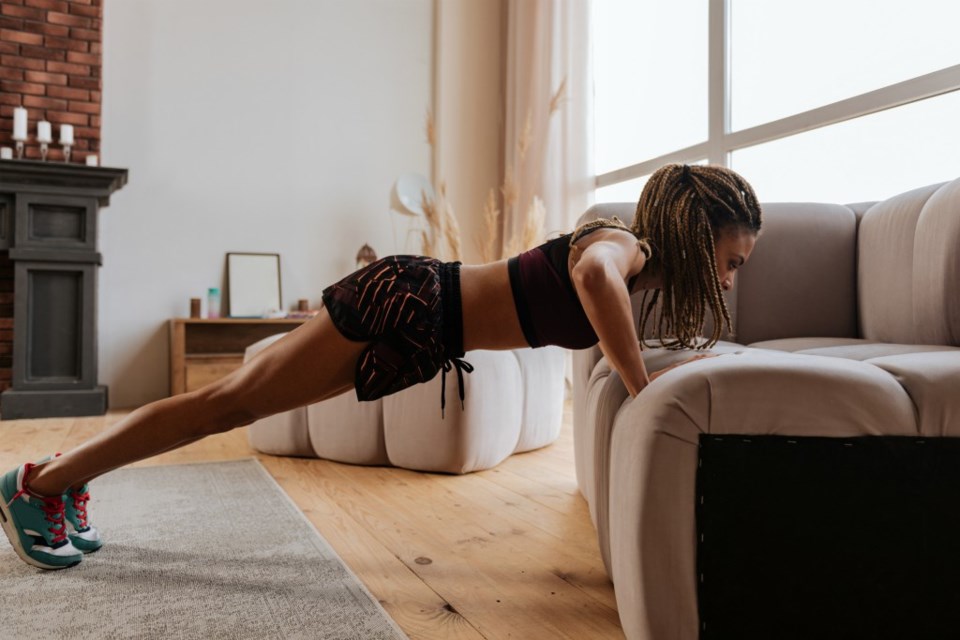Without access to the gym, home workouts are a new reality for many Canadians who are looking to sweat while they are isolating during the coronavirus pandemic.
But without proper equipment, it can be difficult to know how to begin a new exercise routine. Smaller apartments and homes with no designated space for easy movement could impact whether online fitness is an option.
However, there are several ways to work out in a small space effectively that will help you stay on top of your fitness, said Oonagh Duncan, a Toronto-based fitness expert in a recent segment on Global News’ The Morning Show.
“There are so many things you can do in a small space,” she said. “Let’s say you only have a yoga mat, you can do agility training.”
Side shuffles and quick leaps can be done easily with no workout equipment and in a small room, and will help you work up a sweat, she said.
“It’s actually awesome to have a small space because it forces you to change directions quickly, which is going to bring the heart rate up.”
Duncan recommends engaging in exercises like jumping jacks, high knees, along with more “explosive movements” like jump squats or jump lunges to push yourself.
Those are lower impact moves that won’t disturb the neighbours below your unit, she said.
“You can do stuff like 10 high knees, and then drop down and do two push-ups,” she said.
Any movements that can be done on the spot will strengthen your core and build muscle, and you won’t need to purchase any additional equipment to do them, she said.
Using your phone to find virtual workout classes via social media is an easy way to have a guided workout routine, as many classes have shifted online, according to a previous Global News report.
These workouts done in your home allow you to cover fundamental movements, said Geoff Girvitz, a Toronto-based fitness expert and owner of Bang Personal Training.
Taking the time to add movement to your routine while spending more time at home will end up being enough, he said.
“Exercise increases our overall health and sense of well-being, which puts more pep in our step every day,” he said.
For more workouts, you can do at home, watch Oonagh Duncan in the video above.
Questions about COVID-19? Here are some things you need to know:
Health officials caution against all international travel. Returning travellers are legally obligated to self-isolate for 14 days, beginning March 26, in case they develop symptoms and to prevent spreading the virus to others. Some provinces and territories have also implemented additional recommendations or enforcement measures to ensure those returning to the area self-isolate.
Symptoms can include fever, cough and difficulty breathing — very similar to a cold or flu. Some people can develop a more severe illness. People most at risk of this include older adults and people with severe chronic medical conditions like heart, lung or kidney disease. If you develop symptoms, contact public health authorities.
To prevent the virus from spreading, experts recommend frequent handwashing and coughing into your sleeve. They also recommend minimizing contact with others, staying home as much as possible and maintaining a distance of two metres from other people if you go out.
For full COVID-19 coverage from Global News, click here.
— With files from Amanda Pope
